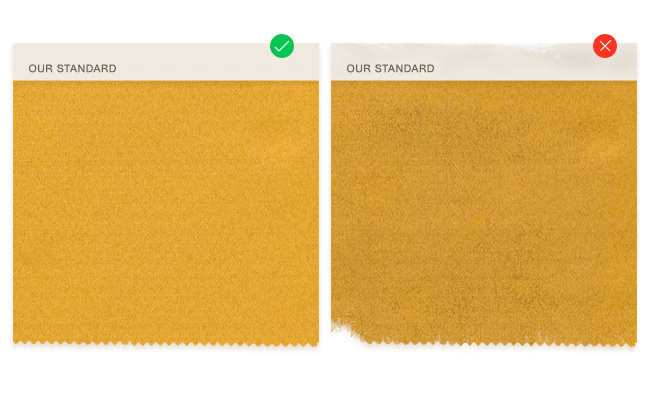Physical samples are important in an advanced color management process in order to ensure that production achieves the expected color.
Yet depending on how they are handled, store and otherwise cared for, they may not be a reliable source of color specification. Physical samples can be damaged by excessive exposure to light and other wear and tear, reducing their reliability.
We've got five tips that will help you maintain physical samples in top condition so they can live up to your expectations and provide a reliable color reference over time.
| 1 |
Keep them clean. Since color standards can require many review and approval cycles, approved physical standards should be well cared for. Be aware of airborne contamination, especially in lab environments. A dusty lab can lead to a dusty (and inaccurate) standard. Take care to not touch the surface, and always wash your hands before touching your physical standards. Careless handling can lead to scratches, and fingerprints can reduce surface gloss and texture. |
|
Keep them away from light. Many color standards are subject to fading. Protect yours from exposure to light (especially UV), heat, and humidity, and do not leave them sitting in the light booth when you’re not using them. Store your standards in black plastic bags without plasticizers, or in non-acidic archival envelopes. |
2 |
| 3 |
Create master and working standards. Whether your standards are handled many times each day or just once a week, they will eventually become soiled or scratched and must be pulled from commission. If you have another standard in reserve, you won’t have to go through the time and expense to recreate your physical samples. Make identical duplicates when you produce the original. Archive and preserve one with great care – this will be your “master” standard, which you can pull out when it’s time to create new copies. Carefully store the others as your “working” standards. Then use them one at a time, replacing when the current one becomes faded or damaged. Keep the standards controlled. Do not allow access by random individuals; but rather, they should be policed and secured by a manager or lead person. |
|
Use the proper colorants and substrates. Be sure to use the same colorants and substrates that you’ll be using in production. For example, don’t use a plastic color standard to quality check a printed carton or paint samples. You may specify to a given color using a reference of dissimilar material, but it is important to generate working master standards that are a representation of the finished good’s final appearance. If you’re manufacturing on multiple substrates or with multiple pigments, create a standard for each combination. |
4 |
| 5 |
Hire an expert. Good color comes down to achieving an acceptable tolerance. If your standards aren’t accurate, you’ll have a tough time pleasing your customers. That’s why you should trust the experts to help with this crucial task. |

Read our blog to learn more!




